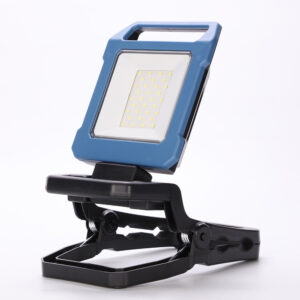How much does heat dissipation affect high brightness LEDs?
Due to the global energy shortage and environmental pollution, LED displays have broad application space due to their energy-saving and environmentally friendly characteristics. The application of LED light-emitting products in the field of lighting is attracting the attention of the world. Generally speaking, the stability and quality of LED lights depend on the heat dissipation of the lamp body itself. Currently, high brightness LED lights on the market often use natural heat dissipation for heat dissipation, which is not ideal. LED lighting fixtures made from LED light sources consist of LEDs, heat dissipation structures, drivers, and lenses, so heat dissipation is also an important part. If the LED cannot dissipate heat well, its lifespan will also be affected.
Thermal management is the main issue in high brightness LED applications
Due to the limited solubility of Mg acceptors and the high starting energy of holes in p-type doping of III nitrides, heat is particularly easily generated in the p-type region, which must pass through the entire structure to dissipate on the heat sink; The main heat dissipation pathways for LED devices are thermal conduction and convection; The extremely low thermal conductivity of Sapphire substrate material leads to an increase in thermal resistance of the device, resulting in severe self heating effect, which has a devastating impact on the performance and reliability of the device.
The Effect of Heat on High Brightness LEDs
Heat is concentrated inside small-sized chips, causing an increase in chip temperature and resulting in non-uniform distribution of thermal stress, as well as a decrease in chip luminous efficiency and fluorescent powder excitation efficiency; When the temperature exceeds a certain value, the device failure rate increases exponentially. Statistics show that for every 2 ℃ increase in component temperature, reliability decreases by 10%. When multiple LEDs are densely arranged to form a white light illumination system, the problem of heat dissipation becomes more severe. Solving the problem of heat management has become a prerequisite for the application of high brightness LEDs.
The relationship between chip size and heat dissipation
The most direct way to increase the brightness of power LED displays is to increase the input power, and in order to prevent saturation of the active layer, the size of the p-n junction must be correspondingly increased; Increasing input power inevitably leads to an increase in junction temperature, which in turn reduces quantum efficiency. The increase in single tube power depends on the device’s ability to dissipate heat from the p-n junction, while maintaining the existing chip material, structure, packaging process, current density on the chip, and equivalent heat dissipation conditions. Increasing the size of the chip alone will continuously increase the junction temperature.
